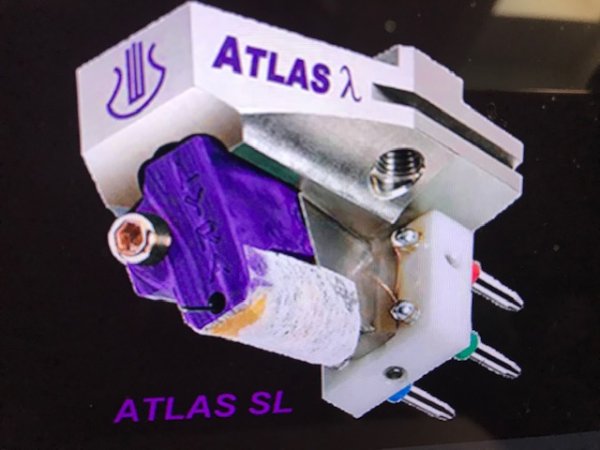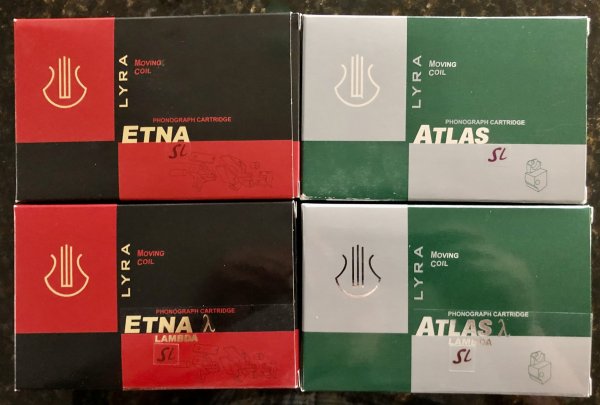OK, let's get the ball rolling.
Warning...I'm a Lyra dealer and no writer.
Been living with the Lambda versions of the Atlas SL and Etna SL for the last four weeks or so. Lived with the older Lyras, both single and dual layer for years. We did relisten to the original Atlas SL and Etna SL for this test. My main cartridge for the last several years has been the Etna SL into a CH Precision P1 using the current gain section with a 20dB gain setting. Tonearms used were the Schröder LT(pivoted linear tracker) and a 9" SAT. Turntable...The Beat SE of course

Had others here for their opinions as well. It has been a lot of fun. And educational.
Bottom line, in my rig, the Lambda versions easily eclipse the originals. In every aspect. No trade-offs. Everyone who participated in these games agreed. Differences of opinion occured when we discussed what was the biggest improvement. That doesn't happen often with this group. From what little intel there was on these carts in the beginning, I did not expect much change. I was wrong. The first improvement noticed, was the drastically reduced noise floor. This allows the lower level information/details to become more solid and present. Not louder, just more defined and "there" if that makes sense.
There is a new level of purity in the sound with the Lambda versions. All commented on this as a very impressive. For some, this was their favorite change.
Bass solidarity has increased, as has three dimensionality and mutli-tonality. Bass lines are more prominent and easier to follow. Leading edge attack is faster, harder hitting. Piano music is where I hear the most change. Texture on the lower notes is more pronounced. The body of the piano really comes into play. Decay is so easy to hear it almost became a game for the group to notice how it changed on different tracks.
The next one is a biggie for me. The music, especially vocals, carries more emotion. One of my friends commented on how he could hear the singer thinking about how he would phrase the next line while singing the previous line. Don't know if that makes any sense here but being there, I knew exactly what he meant. The emotion conveyed by these new carts are significantly improved.
Dynamics are quicker and more free flowing. There is an increased sense of ease now.
Top to bottom balance is excellent. This is an area I payed particular attention to after I had a grasp on the new overall sound I was hearing. Yes, the foundation of the music has improved but everything else has risen to the occasion as well.
I have heard a lot of high end carts in my system. Not all but many. I'm very fortunate to have friends, colleagues, customers and importers lend me some of their best gear. I buy some too. I travel all over the country and some abroad for turntable/tonearm setups. That allows me to hear a lot of outstanding systems. For me, the original Etna SL was as good or better than anything I've heard until now. So my reference was a worthy one. For me. the Etna SL Lambda is the best cartridge I've heard, here or anywhere else.
Anyone that wants to bring their favorite generator for comparisons are more than welcome.
View attachment 61990
One listener said it best, "I thought we had explored the limits of vinyl but...clearly not"







